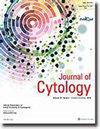Endometrial secrets unmasked through cytology analysis
IF 1
4区 医学
Q4 MEDICAL LABORATORY TECHNOLOGY
引用次数: 0
Abstract
Background: Endometrial aspiration (EA) is an economic, painless technique on an outpatient basis. Present study aimed at cytological evaluation of EA for (a) cellular yield and morphology and (b) utility of cell block (CB) and cytocentrifuge (CC) techniques. Materials and Methods: EA samples were divided into two aliquots. Colorless samples were processed (1000 rpm × 6 min) for conventional smear (CS) and CC, both stained by Papanicolaou. Hemorrhagic samples were processed for CS and CB (paraffin embedding, hematoxylin–eosin stain). Results: Endometrial aspirates from January 2021 to January 2022 were included. Indications comprised abnormal uterine bleeding (AUB; 87), prolapse (eight), and infertility (two). Among 77 hemorrhagic aspirates, the yield was 85.7% by CS and 90.9% by CB. Among 20 colorless aspirates, the yield was 55% by CS and 65% by CC. The yield was 85.7%, 84.4%, and 83.3% with endometrial thickness 1–5, 6–10, and 11–15 mm, respectively. The yield was 83.9%, 50%, and 0% in AUB, prolapse, and infertility, respectively. CS morphology showed the categories of benign (93.5%) and atypia (6.5%). All cases with benign morphology correlated with CB and CC. CB offered architectural evaluation, while CC had a shorter turnaround time. Conclusion: Focusing on menorrhagia cases in secretory phase, nondilution of EA samples, and simultaneous endometrial biopsy can enhance cytology evaluation. In an era where “less should convey more,” EA shows potential as a screening technique vis-à-vis invasive “dilatation–curettage” technique.通过细胞学分析揭示子宫内膜的秘密
背景:子宫内膜抽吸(EA)是一种经济、无痛的门诊技术。本研究旨在细胞学评价EA (a)细胞产量和形态,以及(b)细胞块(CB)和细胞离心(CC)技术的效用。材料与方法:将EA样品分成两份。对无色样品进行常规涂片(CS)和CC处理(1000 rpm × 6 min),均采用Papanicolaou染色。对出血标本进行CS和CB(石蜡包埋,苏木精-伊红染色)处理。结果:纳入了2021年1月至2022年1月的子宫内膜抽吸。适应症包括子宫异常出血(AUB;87例),脱垂(8例)和不孕(2例)。77份吸出物中,CS的产率为85.7%,CB的产率为90.9%。20例无色抽吸中,CS法产率为55%,CC法产率为65%,子宫内膜厚度为1-5、6-10和11-15 mm时产率分别为85.7%、84.4%和83.3%。AUB、脱垂和不育的产率分别为83.9%、50%和0%。CS形态分为良性(93.5%)和异型(6.5%)。所有形态学良性的病例均与CB和CC相关,CB提供建筑学评价,而CC的周转时间较短。结论:关注分泌期月经过多病例,不稀释EA标本,同时进行子宫内膜活检可提高细胞学评价。在一个“少应多”的时代,EA作为一种筛查技术,与-à-vis侵入性“扩张-刮除”技术相比,显示出了潜力。
本文章由计算机程序翻译,如有差异,请以英文原文为准。
求助全文
约1分钟内获得全文
求助全文
来源期刊

Journal of Cytology
MEDICAL LABORATORY TECHNOLOGY-
CiteScore
1.80
自引率
7.70%
发文量
34
审稿时长
46 weeks
期刊介绍:
The Journal of Cytology is the official Quarterly publication of the Indian Academy of Cytologists. It is in the 25th year of publication in the year 2008. The journal covers all aspects of diagnostic cytology, including fine needle aspiration cytology, gynecological and non-gynecological cytology. Articles on ancillary techniques, like cytochemistry, immunocytochemistry, electron microscopy, molecular cytopathology, as applied to cytological material are also welcome. The journal gives preference to clinically oriented studies over experimental and animal studies. The Journal would publish peer-reviewed original research papers, case reports, systematic reviews, meta-analysis, and debates.
 求助内容:
求助内容: 应助结果提醒方式:
应助结果提醒方式:


